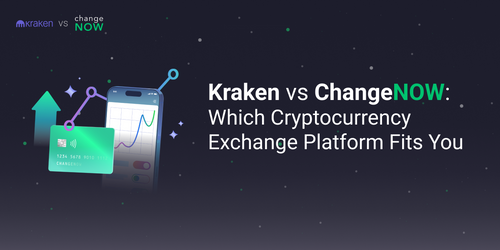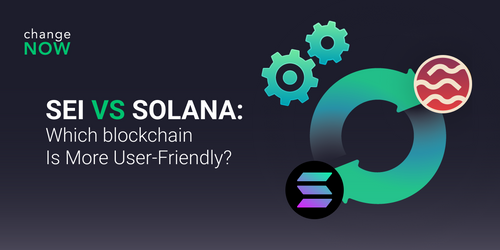CEX vs DEX Compared – Main Features, Benefits, and Drawbacks
When many different cryptocurrencies emerged in the early 2010s, there was an increase in demand for platforms where these assets could be swapped and traded. This is how cryptocurrency exchanges appeared. Historically, centralized exchanges (CEXs) came first: they managed to attract traders from all over the world and became highly liquid. CEXs are key drivers of the entire crypto industry; basically, they set the crypto assets’ prices. DEX crypto exchanges have been largely known for their poor liquidity and less comfortable interfaces as well as lowered security risks; however, recently privacy has become much more prioritized. Thanks to Uniswap and other decentralized crypto exchanges, the industry is changing right before our eyes! In this crypto exchange review, we will compare decentralized and centralized exchanges and consider their pros and cons.
Comparing Crypto Exchanges
Key Takeaways
- Both centralized (CEXs) and decentralized exchanges (DEXs) bring crypto enthusiasts together, helping them to trade and agree on prices.
- CEXs appear to be very user-friendly and offer high liquidity — finding a suitable price is easy and fast. However, there are certain privacy and security risks since CEXs store both your funds and data.
- DEXs are more complex in terms of user interface and often slower in speed. Still, they are more secure and privacy-oriented; your funds stay under your control on the blockchain.
Storage of funds and security: custodial CEXs, non-custodial DEXs
To start trading on a CEX like Binance, Coinbase, or Kraken, you need to sign up and deposit some crypto. Remember: a centralized exchange stores all the funds it gets. In fact, you don’t have full control over your crypto — you don’t own private keys to it. With DEXs, the opposite is true: all your funds stay on the blockchain. You don’t have to deposit anything or reveal your identity by signing up and going through the KYC procedure. On a DEX, you trade right from your wallet. Overall, DEXs are considered more secure than CEXs: if a centralized exchange gets hacked, your funds and private data may be stolen. However, the major CEXs claim to take serious measures against all kinds of breaches.
Trading speed: off-chain CEXs VS on-chain DEXs
On CEXs, all trades happen off-chain. The operations don’t get recorded, and it results in a very high trading speed. Great news: you don’t have to wait until your transaction is verified and confirmed! On DEXs, market participants trade directly from their crypto wallets. If a trade is confirmed, it gets recorded. To execute a trade, you have to wait until your block is confirmed; unfortunately, it may take time and affect your user experience. On DEXs like Bitshares, all trade orders are recorded. The very process of trading becomes more transparent but also far more slower. On Binance DEX and IDEX, trade orders are hosted by the centralized off-chain authorities. The process speeds up, but not significantly. The majority of DEXs is held on one blockchain; a trader may therefore switch only between the tokens existing within this blockchain. CEXs provide much more variety in this regard.
User experience, number of users, and liquidity
CEXs offer a relatively simple user interface, so it’s much easier for a crypto newcomer to start working with one of them. These exchanges offer better trading speed and attract many more customers. Since there are many people willing to buy and sell assets with the help of centralized exchanges, the prices there become much more competitive. Thus, it gets much easier for the users to buy and sell assets quickly and for reasonable prices. You got it: CEXs are definitely far more liquid. DEXs still have a way to go in terms of attracting users and raising their liquidity. However, recent advancements in their algorithms may offer a solution to this problem. To understand how they do that, we’ll need to take a look at how the trading algorithms of CEXs and DEXs work in general.
Order books and trade orders
As it has been mentioned earlier, any exchange is a place where buyers and sellers of cryptocurrencies meet and work together. On CEXs and most of the DEXs, buyers place their requests and sellers place their “bids” within a so called order book. The exchange is expected to match these orders. On CEXs, it is done by a unique algorithm called a matching engine. On DEXs, there are on-chain and off-chain order books, and the orders are connected algorithmically via smart contracts. As we know from the previous parts, decentralized exchanges lack liquidity. But even many market makers coming to a DEX with their money won’t fix it: they would quickly congest the blockchain. It could result in an even lower trading speed, discouragement of users, and — ultimately — further liquidity lowering. Let’s look at how Uniswap and some other new generation DEXs resolve this conflict.
How does Uniswap work?
Traditionally, liquidity is provided by the market makers. For example, the BTC-ETH pair rates are determined by the ratio of “buys” and “sells” put in an order book. But as we stated, the order book plays the role of a DEX bottleneck and makes transaction fees rise. To solve this problem, Uniswap has implemented the Constant Product Market Maker Model. Whenever a swap between two assets is made, their prices get automatically adjusted according to a specific (but very simple) equation. To make it possible, Uniswap uses liquidity pools (LPs). An LP is a pool of tokens locked in a smart contract for a specific trading pair, e.g. ETH-MKR. This pool gets filled by the users called liquidity providers. For every swap linked to this pair, a 0.3% fee is paid and distributed among all of them. This way of getting profit is called liquidity mining. The prices for the ETH-MKR pair are determined automatically depending on the assets’ balance in the pool. There’s no more need to track the balance manually!
Would you recommend a centralized or decentralized Bitcoin exchange?
The final CEX/DEX choice depends on three main parameters:
- the level of privacy & security you’d like to have, 2) your user experience preferences, and 3) the assets you want to trade. If you need to work at high speed, have access to many pairs from different blockchains, and not to be misled by the user interface, go to a CEX crypto exchange. If you are looking for security and anonymity, choose DEX crypto exchanges. In fact, you don’t really have to choose. ChangeNOW combines all of the advantages listed above. We allow you to swap 900+ cryptocurrencies in a couple of minutes and guarantee your anonymity and security. We have no complex trading tools and strive to make the process as simple as possible. Join us NOW.





